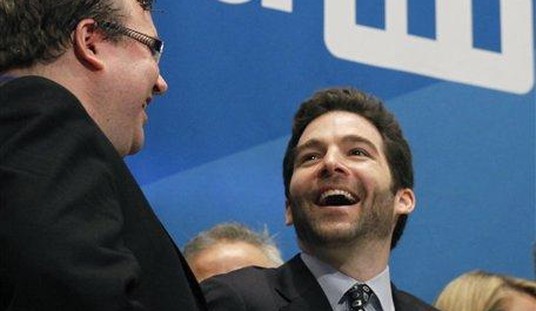Barack Obama still has a big problem in the upcoming general election, as Marist notes in its new McClatchy poll today. The incumbent can’t get outside of the margin of error against Mitt Romney, leading 46/44, while Rick Santorum is only five points behind Obama:
Months into a bruising primary campaign, Republican presidential front-runner Mitt Romney is still neck and neck with President Barack Obama in a hypothetical general election matchup, according to a new McClatchy-Marist poll.
Obama leads Romney 46-44 percent, suggesting a country that remains closely divided between the major parties, unwilling to rally to the Democratic incumbent and refusing to cast aside the front-runner for the Republican nomination after a dark hour of attacks and sniping inside his party.
Rick Santorum, the other major GOP candidate, remains close to Obama as well. The poll finds the president leading him 48-43 percent in a possible fall matchup.
A key reason they’re both close: Each edges the president among independent voters by 1 point. Another: The president, while enjoying an uptick of support on his handling of the economy and foreign affairs, nevertheless has the overall job approval of fewer than half of American voters at 48 percent, with 47 percent disapproving and 5 percent unsure. He fares a tad better when voters were asked whether they have favorable or unfavorable impressions of him: Fifty percent are favorable, 46 percent unfavorable and 3 percent unsure.
Once again, a couple of caveats are in order. Head-to-head matchups between incumbents and multiple opponents competing in a primary are somewhat misleading. The split in the other party may artificially depress support for the alternatives. The key figure in these polls is the level of support the incumbent receives, and in this case, the incumbent can’t get to 50%. That’s a sign that the incumbent will have a difficult time winning re-election no matter who his opponent may be.
The sample in this case isn’t a problem, although the sample type is not the most predictive. The poll surveyed 1,080 general-population adults and derived 846 registered voters rather than likely voters, which is a more predictive sample type. Nine percent of this group identified as first-time voters, which means that the likelihood of these voters casting ballots in the fall would be lower. However, the partisan split in the latter population looks quite realistic, with a D/R/I of 33/31/35.
Some of the crosstab info supports my warning on head-to-head matchups at this point. Nineteen percent of self-described “very conservative” voters claim they would vote for Obama rather than Romney, as did 17% of “conservative” voters. Almost the same numbers apply in the Santorum matchup (19% and 18%, respectively). There seems little doubt that only a few “very conservative” voters will ever cast a ballot for Obama, and the same is true for “conservative” voters. This seems very much like residual resentment towards competing Republicans than a measure of support for Obama.
The big takeaway in this poll is probably the behavior of independents, who favor Republican candidates by a single point — a virtual tie. Obama won independents by eight points in the overall 2008 exit polls on his way to a seven-point margin of victory in the popular vote, with 52% of independents voting for the Democrat. If Obama can’t get above 44% against either Romney or Santorum in this apples-to-oranges comparison, he’s in real trouble.








Join the conversation as a VIP Member